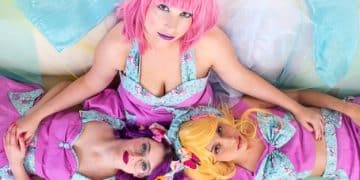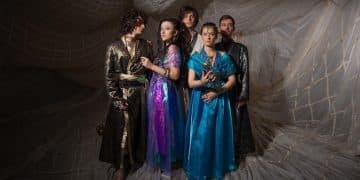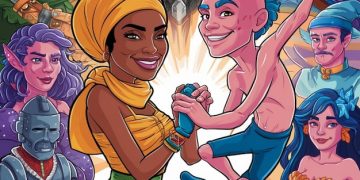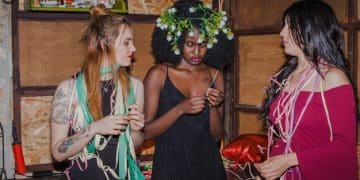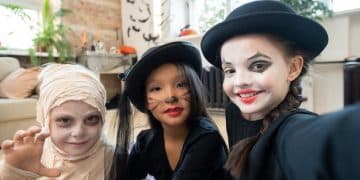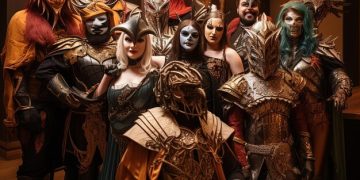Cosplay Photography: Capturing the Essence of Geek Culture
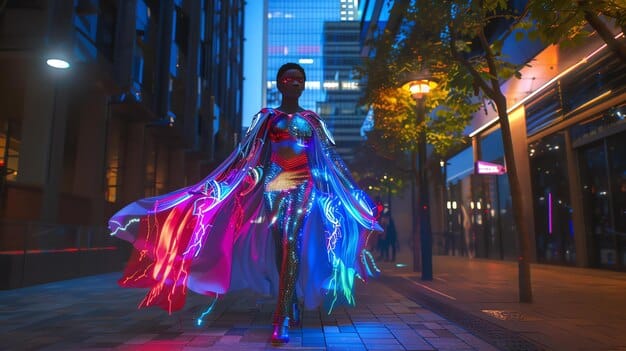
Cosplay photography is a genre that blends the artistry of photography with the creativity of costume play, capturing the essence, detail, and emotion of characters brought to life by cosplayers, often celebrated within geek culture.
Have you ever seen a cosplayer and wished you could freeze that moment in time? Cosplay photography does just that, immortalizing the artistry and dedication that goes into bringing beloved characters to life.
What is Cosplay Photography?
Cosplay photography is a specialized branch of photography focused on capturing images of individuals dressed in costumes, known as cosplayers. It goes beyond mere documentation; it’s about storytelling and artistry.
The goal is to visually represent the character being portrayed, highlighting the details of the costume, the cosplayer’s performance, and the overall atmosphere that evokes the character’s world.
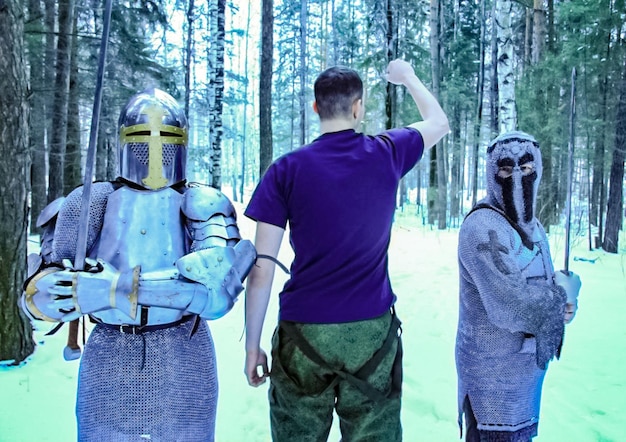
Key Elements of Cosplay Photography
Creating compelling cosplay photography involves several essential elements that contribute to the overall impact of the image. Understanding these elements is crucial for both photographers and cosplayers.
- Costume Accuracy: The photograph should showcase the accuracy and craftsmanship of the costume. Pay attention to details like fabric texture, accessories, and overall design.
- Character Portrayal: The cosplayer’s pose, expression, and demeanor should accurately reflect the character’s personality and traits.
- Location and Background: The setting should complement the character and enhance the storytelling aspect of the photo.
- Lighting and Composition: Effective use of lighting and composition techniques can create a dramatic and visually appealing image.
In essence, cosplay photography is a collaborative effort between the photographer and the cosplayer to produce a visually stunning representation of a beloved character.
Essential Equipment for Cosplay Photography
Having the right equipment can significantly impact the quality of your cosplay photography. While advanced gear isn’t always necessary, certain tools are essential for capturing stunning images.
Choosing the correct tools can make all the difference in capturing the essence of a character brought to life through cosplay.
Camera and Lenses
A DSLR or mirrorless camera with interchangeable lenses is ideal for cosplay photography. These cameras offer greater control over settings and allow for more creative flexibility.
- Standard Zoom Lens (24-70mm): Versatile for various shooting situations, from full-body shots to portraits.
- Telephoto Lens (70-200mm): Useful for capturing details from a distance or creating a shallow depth of field.
- Prime Lens (50mm or 35mm): Excellent for portraits and low-light photography, offering sharp image quality.
Lighting Equipment
Lighting is crucial for creating visually appealing cosplay photos. Depending on the location and available light, different lighting equipment may be needed.
Consider how light can enhance or detract from the details of the costume and the character’s mood. Effective management of light is key.
Other Important Accessories
In addition to cameras, lenses, and lighting, several other accessories can enhance your cosplay photography experience. These accessories can provide stability, convenience, and creative options.
- Tripod: Provides stability for sharp images, especially in low-light conditions.
- Reflectors: Help bounce light onto the subject, filling in shadows and creating a more balanced exposure.
- Diffusers: Soften harsh light, creating a more flattering and natural look.
Investing in these accessories can elevate your cosplay photography, allowing you to capture stunning images with greater ease and precision.
Finding the Perfect Location
The location of a cosplay shoot is just as important as the costume and the photographer’s skill. The right setting can enhance the character’s story and create a more immersive experience.
A well-chosen location adds depth and context to the photograph, making the character feel more authentic.
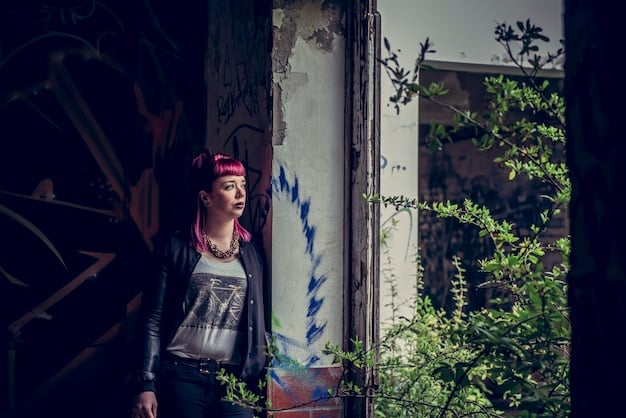
Matching the Environment to the Character
The key to finding the perfect location is to match the environment to the character’s world. Consider the character’s origins, personality, and story when selecting a location.
- Fantasy Characters: Forests, castles, and historical sites can provide an immersive setting for fantasy characters.
- Sci-Fi Characters: Urban landscapes, industrial areas, and futuristic architecture can complement the look of sci-fi characters.
- Anime/Manga Characters: Parks, gardens, and themed cafes can offer a suitable backdrop for anime and manga characters.
Scouting Locations and Obtaining Permissions
Before the day of the shoot, it’s essential to scout potential locations and obtain any necessary permissions. Scouting allows you to assess the lighting conditions, potential obstacles, and best angles for photography.
Failing to obtain necessary permissions can lead to legal issues or being asked to leave the location, disrupting the shoot.
Utilizing Natural and Artificial Elements
Look for opportunities to incorporate natural and artificial elements into the location to enhance the photograph. Natural elements like sunlight, trees, and water can add depth and texture.
- Sunlight: Use natural light to illuminate the subject and create dramatic shadows.
- Architecture: Incorporate interesting architectural details into the background.
- Props: Add props that are relevant to the character or location to enhance the storytelling.
By carefully selecting and preparing the location, you can create a captivating setting that elevates your cosplay photography.
Posing and Directing Cosplayers
Directing cosplayers is a crucial aspect of cosplay photography. Effective posing can bring out the character’s personality and enhance the overall impact of the image.
Good direction helps the cosplayer embody the character and create a more believable and engaging photograph.
Understanding Character Personality
Before the shoot, take the time to understand the character’s personality, traits, and backstory. This knowledge will inform the posing and direction, ensuring that the cosplayer accurately portrays the character.
If the character is stoic and serious, direct the cosplayer to adopt a more reserved and composed posture.
Effective Communication and Collaboration
Communication is key to successful posing and direction. Clearly communicate your vision to the cosplayer and encourage their input and creativity. A collaborative approach can lead to more authentic and engaging photographs.
- Provide Clear Instructions: Give specific and easy-to-understand instructions for poses and expressions.
- Offer Positive Feedback: Encourage the cosplayer and provide positive feedback to build confidence.
- Be Open to Suggestions: Listen to the cosplayer’s ideas and incorporate them into the shoot.
Posing Techniques for Different Body Types
Consider the cosplayer’s body type when directing poses. Certain poses may be more flattering or comfortable for different body types. Adapt your posing techniques to suit the individual cosplayer.
Avoid poses that may make the cosplayer feel self-conscious or uncomfortable. Instead, focus on poses that highlight their strengths and confidence.
Mastering Lighting Techniques
Lighting is one of the most critical elements of photography, and it’s especially important in cosplay photography. Effective lighting can enhance the costume’s details, highlight the character’s features, and create the desired mood.
Understanding how to manipulate light can transform an ordinary photograph into a stunning work of art.
Natural Light vs. Artificial Light
Cosplay photography can utilize both natural and artificial light, depending on the location, time of day, and desired effect. Each type of light has its advantages and disadvantages.
Natural light is free and readily available, but it can be unpredictable and difficult to control.
- Golden Hour: The hour after sunrise and before sunset, when the light is soft and warm.
- Overcast Days: Provide diffused, even lighting that minimizes shadows.
Using Reflectors and Diffusers
Reflectors and diffusers are essential tools for manipulating light in cosplay photography. Reflectors bounce light onto the subject, filling in shadows and creating a more balanced exposure.
Diffusers soften harsh light, creating a more flattering and natural look. They are especially useful when shooting in direct sunlight.
Creating Dramatic Lighting with Strobes
Strobes, or studio flashes, offer greater control over lighting and can be used to create dramatic effects in cosplay photography. Strobes are essential for indoor shoots or when natural light is insufficient.
Experiment with different lighting setups to find the best approach for your cosplay photography. With practice and creativity, you can master the art of lighting and create visually stunning images.
Post-Processing and Editing Tips
Post-processing and editing are essential steps in cosplay photography. Editing can enhance the colors, adjust the exposure, and refine the overall look of the image.
Thoughtful editing can transform a good photograph into an exceptional one, adding the finishing touches that bring the character to life.
Software and Tools for Editing
Several software programs and tools are available for editing cosplay photographs. Some of the most popular options include:
- Adobe Photoshop: The industry-standard software for photo editing, offering a wide range of tools and features.
- Adobe Lightroom: A powerful photo management and editing tool designed for photographers.
- GIMP: A free and open-source image editing program that offers many of the same features as Photoshop.
Basic Editing Techniques
Before diving into advanced editing techniques, it’s essential to master the basics. These basic adjustments can significantly improve the quality of your cosplay photos.
Adjusting the white balance can correct color casts and ensure that the colors in the photo are accurate.
Advanced Editing Techniques
Once you’ve mastered the basics, you can explore more advanced editing techniques to enhance your cosplay photography. These techniques can add depth, drama, and visual interest to your images.
Adding subtle effects can enhance the overall mood and atmosphere of the photo without overpowering the subject.
| Key Aspect | Brief Description |
|---|---|
| 📸 Equipment Essentials | Camera, lenses, and lighting are crucial for high-quality cosplay photos. |
| 📍 Location Scouting | Match the environment to the character’s world for an immersive experience. |
| 🎭 Posing & Direction | Understand the character’s personality for effective posing and direction. |
| 💡 Lighting Mastery | Use natural and artificial light to enhance costume details and set the mood. |
[Frequently Asked Questions]
▼
A DSLR or mirrorless camera with interchangeable lenses is ideal. Consider models from Canon, Sony, or Nikon.
▼
Match the environment to the character’s world. Scout locations beforehand and obtain any necessary permissions.
▼
Utilize natural light during the golden hour, use reflectors and diffusers, and experiment with strobes.
▼
Understand the character’s personality, communicate clearly, and adapt poses to the cosplayer’s body type.
▼
Adjust white balance, exposure, and contrast. Use advanced techniques like retouching and color grading sparingly.
Conclusion
Cosplay photography is a compelling art form that captures the dedication and creativity of cosplayers. By mastering essential techniques, from equipment selection and location scouting to posing, lighting, and post-processing, photographers can create stunning images that celebrate geek culture and bring fantastical characters to life.
